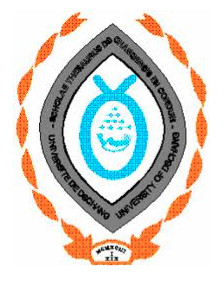Diarrhoea, which is the second leading cause of death in children under five years old and the third killer disease in low income countries, still has a high incidence despite the efforts of many governments and international organisations to curb it. Diarrhoea, especially of microbial origin, enhances oxidative stress through elevated levels of free radicals in blood; a situation that provokes serious deleterious effects in the body. To contribute in the search for new natural products susceptible to cure diarrhoea and permit the standardisation of phytomedicine, the stem barks of Trilepisium madagascariense and Entada abyssinica, on ethnobotanical basis, were collected in May 2007 in the Menoua Division, West Cameroon and their antidiarrhoeal properties evaluated. Methanol extracts were prepared from the individual plant stem bark powders and a portion was partitioned successively with n-hexane, ethyl acetate and n-butanol. The methanol extracts and fractions were subjected to phytochemical screening tests using standard procedures. The ethyl acetate fractions of both plants which turned out to be the most active were subjected to a series of column chromatography to isolate the active compounds. The antimicrobial properties of crude methanol extracts, fractions and pure compounds from both plants were investigated using the agar-well diffusion and broth microdilution methods. Ciprofloxacin and nystatin served as standard antibacterial and antifungal drugs respectively. The crude methanol extracts (at 100, 200 and 400 mg/kg), fractions (at 80 mg/kg), some of the isolated compounds and reference drugs were separately evaluated for their antidiarrhoeal properties against both castor oil-induced and Shigella-induced diarrhoeal models in Wistar rats. Loperamide and diphenoxilate HCl served as standard drugs (at 2 mg/kg). The antioxidant activity of the crude extracts, fractions and isolated compounds were determined using the DPPH radical scavenging method. Alkaloids, flavonoids, phenols, saponins, tannins and cardiac glycoside were detected in the crude methanol extracts and some fractions. The column chromatographic fractionation of the ethyl acetate fractions afforded some known compounds [vanillic acid (1) and isoliquiritigenin (2)] from T. madagascariense; and (1R,2R,4aR)-1,2,3,4,4a,7,8,8a-octahydro-1,2,4a-trimethyl-1,5-naphthalenedicarboxylic acid (3), methyl gallate (4) and 1,2,3-trihydroxybenzene (5) from E. abyssinica. The fractionation of the crude methanol extract (MIC range from 12.2 to 1562 µg/ml) enhanced the antimicrobial activity in some fractions (MIC range from 12.2 to 390.6 µg/ml). The isolated compounds showed significant antimicrobial activities that varied slightly among the studied bacteria and fungi with MIC some times lower than those of reference drugs. The most sensitive bacterium was Pseudomonas aeruginosa (MICs of 9.76 µg/ml against methyl gallate) while Candida guillermondi (MIC of 0.01 µg/ml against isoliquiritigenin) was the most sensitive fungus. The crude methanol extracts, some fractions and isolated compounds showed significant antidiarrhoeal activities. Compounds 2 and 4 delayed the onset of diarrhoea induction (179.40 ± 11.65 and 223.33 ± 12.77 min respectively) compared to the saline control (60.80 ± 6.62 min). The purging indices decreased with increase in dose of tested samples. A significant increase in blood cell counts and a significant decrease (p≤0.05) in serum creatinine levels and faecal Shigella load were observed in rats treated with plant extracts with respect to the saline treated controls. The crude extracts, fractions and pure compounds showed antioxidant properties through the scavenging of free DPPH radicals, with a radical scavenging activity-50 (RSa50) of 1.44 µg/ml for compound 4; 3.07 and 5.00 µg/ml for the ethyl acetate fractions; 7.12 and 29.92 µg/ml for the crude methanol extracts of E. abyssinica and T. madagascariense respectively. The crude methanol extracts, fractions and some of the isolated compounds from both T. madagascariense and E. abyssinica thus showed considerable antimicrobial, antidiarrhoeal and antioxidant activities. The reported activities of these plants, herein presented for the first time, provide clear evidence that the active principles from these plants can serve as indicators for the standardisation of phytomedicine against diarrhoea and other infectious diseases
